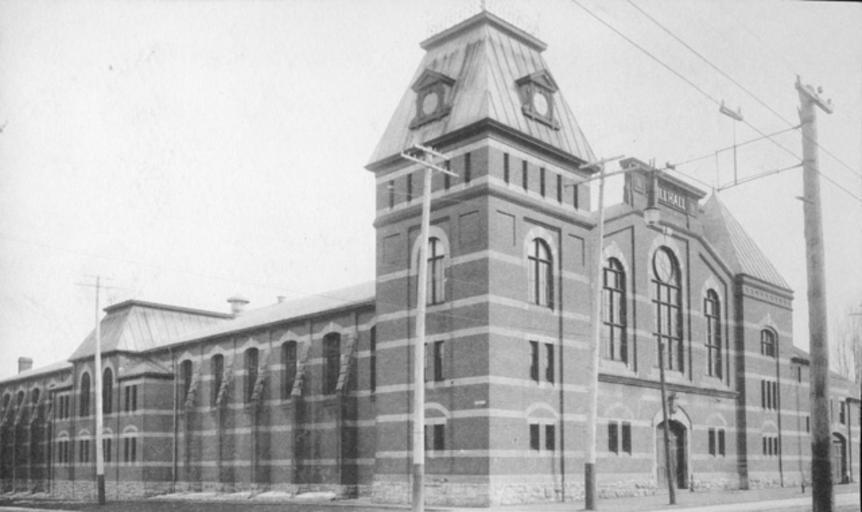MAKE A MEME
View Large Image

| View Original: | Drill_Hall/Armouries.jpg (640x380) | |||
| Download: | Original | Medium | Small | Thumb |
| Courtesy of: | www.flickr.com | More Like This | ||
| Keywords: hamilton hamont blackandwhite monochrome building architecture black and white The original armoury, or Drill Hall, to house Hamilton’s first militia unit, the 13th Battalion, later the Royal Hamilton Light Infantry, was built in 1862 and was destroyed after sparks from a Victoria Day celebration set it on fire on May 23, 1886. It was rebuilt. In 1906 Joseph Michael Pigott was hired to design and construct the James Street Armoury. This imposing Romanesque Revival stone and brick building, erected entirely by Hamilton workmen, opened in 1908. In 1936 with war looming the rear of the two armouries was connected with another two storey wing and gave the appearance of one massive building occupying half a city block. It is the largest single military facility in Canada. The building was later renamed the John W. Foote VC Armoury in honour of Hon. Lt.-Col. John Weir Foote who was the only member of the Canadian Chaplains’ Services ever to be awarded the Victoria Cross for his heroism at Dieppe. 056-32022194823213 The original armoury, or Drill Hall, to house Hamilton’s first militia unit, the 13th Battalion, later the Royal Hamilton Light Infantry, was built in 1862 and was destroyed after sparks from a Victoria Day celebration set it on fire on May 23, 1886. It was rebuilt. In 1906 Joseph Michael Pigott was hired to design and construct the James Street Armoury. This imposing Romanesque Revival stone and brick building, erected entirely by Hamilton workmen, opened in 1908. In 1936 with war looming the rear of the two armouries was connected with another two storey wing and gave the appearance of one massive building occupying half a city block. It is the largest single military facility in Canada. The building was later renamed the John W. Foote VC Armoury in honour of Hon. Lt.-Col. John Weir Foote who was the only member of the Canadian Chaplains’ Services ever to be awarded the Victoria Cross for his heroism at Dieppe. 056-32022194823213 | ||||